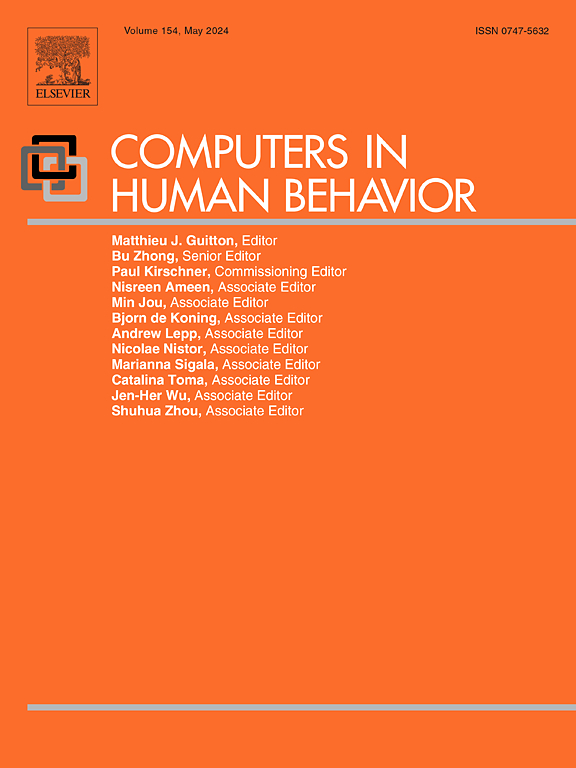What is (not) ghosting? A theoretical analysis via three key pillars
IF 9
1区 心理学
Q1 PSYCHOLOGY, EXPERIMENTAL
引用次数: 0
Abstract
Ghosting, unilaterally ceasing communication without providing any explanation, has emerged as a prevalent and perplexing form of relationship dissolution. Despite its increasing occurrence, existing definitions of ghosting remain inconclusive and occasionally contradictory. Theoretical frameworks such as relationship dissolution and social exclusion models are in some ways appropriate for understanding ghosting but fail to provide a fully comprehensive understanding. This theoretical analysis addresses the gaps by delineating the specificities and boundaries of ghosting through three key pillars. First (1), we examine the nature of the social connections and types of relationships in which ghosting occurs, as dissolution dynamics differ across romantic partnerships, friendships, or professional relationships. Second (2), we investigate technology's (potentially) pivotal role in ghosting, considering whether ghosting is as contemporary as the terminology suggests. Third, we explore the temporal elements of ghosting (3) discussing the suddenness and definitiveness of ghosting events. Based on this theoretical analysis, we propose the following renovated definition of ghosting: Ghosting is a form of ostracism predominantly enacted through digital technology that consists of a unilateral, sudden or gradual cease of communication without explanation to end a meaningful relationship definitively. Additionally, we discuss neighboring phenomena (e.g., orbiting, breadcrumbing) that are closely similar but distinguishable from ghosting. Lastly, we emphasize the subjectivity of ghosting experiences, highlighting perceptual gaps between ghosters and those being ghosted (‘ghostees’). With this contribution, we present a theoretical framework for studying ghosting and establish the groundwork for future research, facilitating a better comprehension of ghosting's definition within various relationship contexts.
什么是(不是)重影?通过三个关键支柱进行理论分析
“鬼影”(Ghosting)是指单方面停止沟通而不作任何解释,它已成为一种普遍而令人困惑的关系破裂形式。尽管它的出现越来越多,现有的定义鬼影仍然是不确定的,偶尔矛盾。诸如关系解体和社会排斥模型等理论框架在某些方面适合于理解“鬼影”,但未能提供全面的理解。这一理论分析解决了差距,通过三个关键支柱描绘的特殊性和边界的重影。首先(1),我们研究了社会联系的性质和发生鬼影的关系类型,因为在浪漫的伙伴关系、友谊或职业关系中解散的动态是不同的。第二(2),我们研究了技术在鬼影中的(潜在的)关键作用,考虑到鬼影是否像术语所暗示的那样是当代的。第三,我们探讨了鬼影的时间因素(3)讨论了鬼影事件的突然性和确定性。基于这一理论分析,我们提出了以下更新的“鬼影”定义:鬼影是一种主要通过数字技术实施的排斥形式,包括单方面、突然或逐渐停止沟通,而没有任何解释,以明确结束一段有意义的关系。此外,我们还讨论了邻近的现象(例如,轨道,面包屑),这些现象非常相似,但与鬼影有区别。最后,我们强调了鬼影体验的主观性,强调了鬼影者和被鬼影者(“鬼影者”)之间的感知差距。通过这一贡献,我们提出了一个研究鬼影的理论框架,并为未来的研究奠定了基础,促进了在各种关系背景下更好地理解鬼影的定义。
本文章由计算机程序翻译,如有差异,请以英文原文为准。
求助全文
约1分钟内获得全文
求助全文
来源期刊

Computers in Human Behavior
Multiple-
CiteScore
19.10
自引率
4.00%
发文量
381
审稿时长
40 days
期刊介绍:
Computers in Human Behavior is a scholarly journal that explores the psychological aspects of computer use. It covers original theoretical works, research reports, literature reviews, and software and book reviews. The journal examines both the use of computers in psychology, psychiatry, and related fields, and the psychological impact of computer use on individuals, groups, and society. Articles discuss topics such as professional practice, training, research, human development, learning, cognition, personality, and social interactions. It focuses on human interactions with computers, considering the computer as a medium through which human behaviors are shaped and expressed. Professionals interested in the psychological aspects of computer use will find this journal valuable, even with limited knowledge of computers.
 求助内容:
求助内容: 应助结果提醒方式:
应助结果提醒方式:


